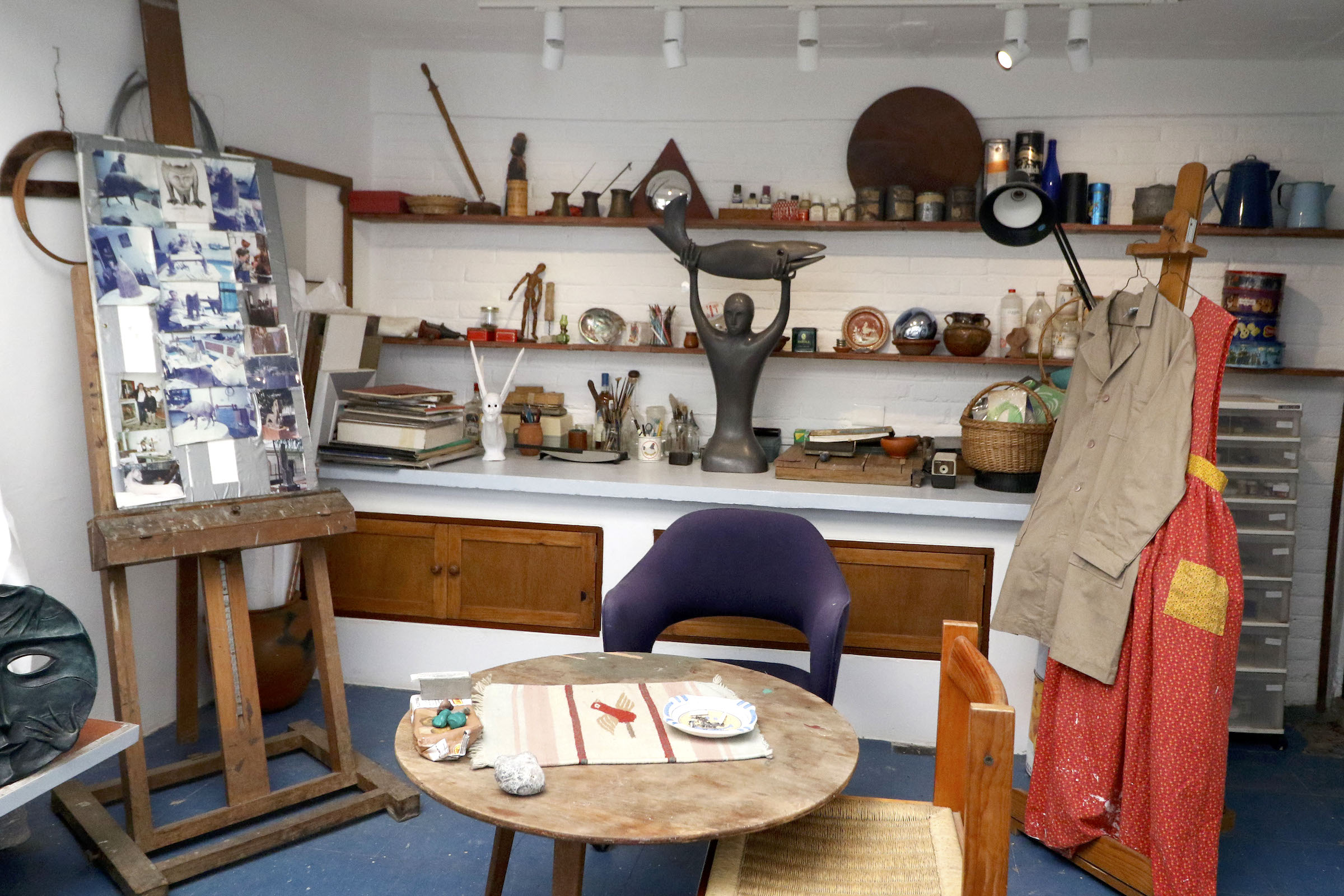The Mexico City home studio of trailblazing Surrealist artist Leonora Carrington will be turned into a research center instead of a public museum, the Spanish newspaper El País reported yesterday, October 23. The change in plans follows a reported disagreement between the city’s Universidad Autónoma Metropolitana (UAM), which owns the property, and unionized staff who work for the school.
Situated on Chihuahua Street in Mexico City’s Roma neighborhood, the three-story house is known as the site where Carrington lived and worked for more than six decades, producing an oeuvre that has continued to attract global attention and shatter records on the public market since her death in 2011.
“One sort of passes from space to space that seems so characteristic of the paintings that Leonora did,” described filmmaker Kim Evans in a 1992 BBC profile of Carrington in her home.
The British-born artist left her residence to her son Pablo Weisz Carrington, who promised his mother he would turn her home into a museum where visitors could tour her kitchen, living room, studio, and interior gardens containing 8,600 objects, photos, and sketches, in a layout similar to that of Frida Kahlo’s iconic Casa Azul in Coyoacán.
In 2017, he sold the property for 12 million pesos (~$605,000) to UAM, which began remodeling the building the following year, and in 2021, the school officially announced it would open the site as a public museum featuring 45 of Carrington’s sculptures that had been donated by her son.
UAM’s general coordinator of Diffusion of Outreach Yissel Arce Padrón told El País that instead the house will now operate as a “documentation center,” explaining that the school’s primary interest is research.
On the other hand, Rodolfo Pérez, the general secretary for the university’s workers’ union who was involved in contract negotiations for several years, said that the school violated a collective labor agreement that stipulated it would open 17 jobs to permanent staff.
“The university has used the union as a pretext to avoid carrying out a project that they are obliged to carry out,” Pérez said, adding that at the center of the change in plans is “a lack of strategic planning and, above all, of discretionary management of the budget” — reasons that Padrón denied.
“The issue of spaces, not only for cultural spaces, but for the entire university, is always very controversial and has to do with other economic implications, with how the public university receives funding from the Government; what cannot be done and what can,” Padrón said, emphasizing that “there is no dispute.”
Hyperallergic has reached out to UAM and the workers’ union for comment.

